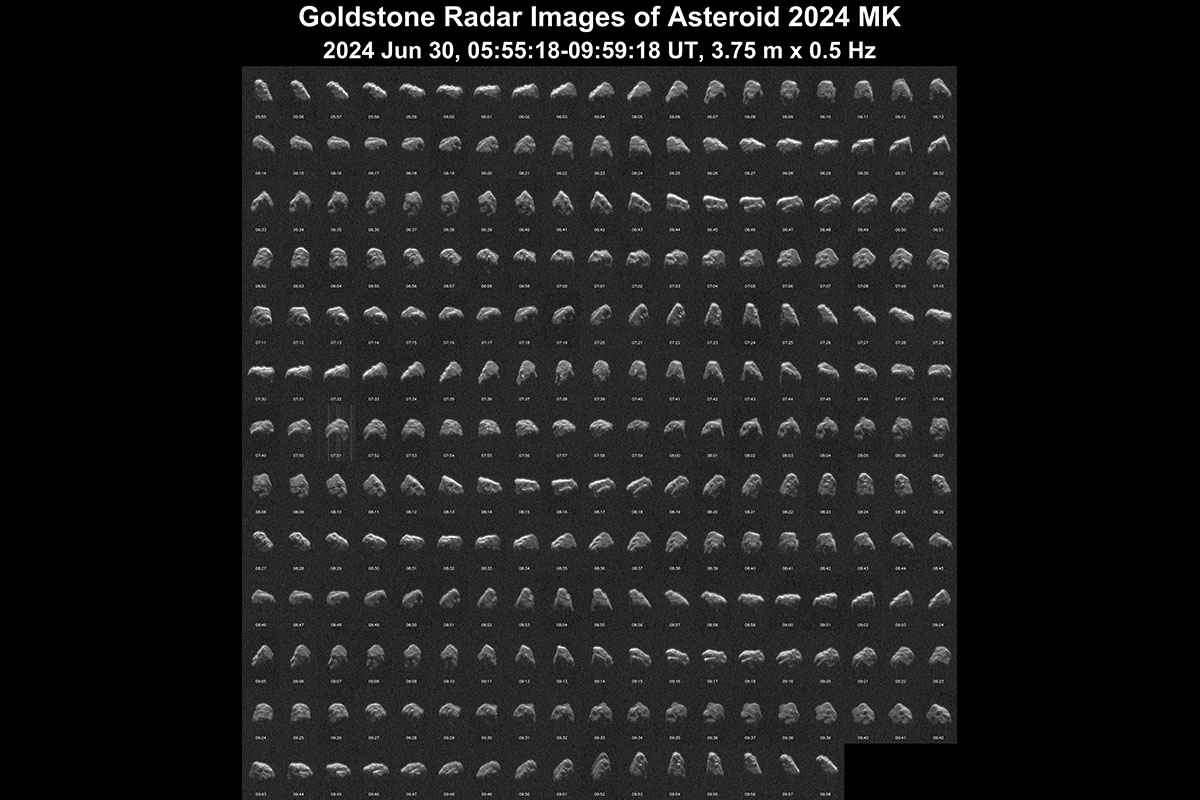Home Because close approaches by asteroids the size of 2024 MK are relatively rare, JPL’s planetary radar team gathered as much information about the near-Earth object as possible. This mosaic shows the spinning asteroid in one-minute increments about 16 hours after its closest approach with Earth. (NASA/JPL-Caltech) Because close approaches by asteroids the size of 2024 MK are relatively rare, JPL’s planetary radar team gathered as much information about the near-Earth object as possible. This mosaic shows the spinning asteroid in one-minute increments about 16 hours after its closest approach with Earth. (NASA/JPL-Caltech)
Because close approaches by asteroids the size of 2024 MK are relatively rare, JPL’s planetary radar team gathered as much information about the near-Earth object as possible. This mosaic shows the spinning asteroid in one-minute increments about 16 hours after its closest approach with Earth. (NASA/JPL-Caltech)




